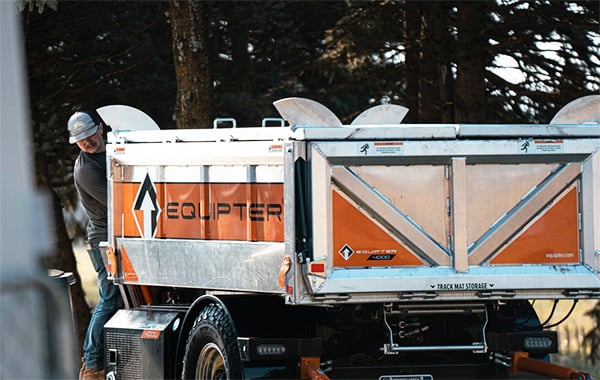A chimney removal can be a monumental task requiring specialized tools and expertise. Some homeowners might decide to undertake this endeavor as a way to modernize their homes, create more space, or deal with an unsightly chimney. Prior to delving headfirst into such an undertaking, it is important to think through whether to take the job on yourself or to hire a professional, the cost involved with the project, and how a chimney removal will impact the value of your home. This article will look at what tools are necessary for the process and what to consider when beginning the process of removing a chimney from your home.
Tools For A Chimney Removal
For homeowners considering taking on a chimney removal project themselves, there is a list of essential tools necessary for the job. Knee pads, dust masks, safety glasses, work boots, and heavy-duty gloves are some of the most basic safety equipment you would need for the job. Other common tools include hammers, pry bars, brooms, and dustpans for basic demolitions. Reciprocating saws, chisels, drilling machines, and angle grinders might also be required, depending on whether the chimney is brick or metal. Some of these tools may be available to rent in your area.
Professionals will have access to more specialized tools for a chimney removal. These can include angle grinders outfitted with a diamond blade used to cut through metal flashing or rotary hammer drills that can break through concrete and reinforced masonry. Professional contractors may use thermal imaging cameras or moisture meters to detect hidden damage to the structure surrounding a chimney.
One consideration for any chimney removal process is waste disposal, how to get debris and rubble off of the roof and into a dumpster. Roofers and construction professionals around the country use the Equipter 4000 for material handling and debris management. The Equipter 4000 can lift its 4.1 cu. yd. box to the roofline where bricks and metal refuse can be placed into its container. Once the box is full, the self-propelled Equipter can be driven to a roll-off dumpster where the Equipter can lift and dump its contents into the dumpster. The Equipter 4000 eliminates the need for wheelbarrows or tarps and the process protects lawns and gardens from damage. Many roofing businesses own Equipter 4000 and the Equipter can be rented from over 400 rental partners across the United States and Canada.
Weighing The Cost Benefit Of A Chimney Removal
An important consideration tied to this venture involves the financial aspects. Typically, the expense can vary depending on the nature of the procedure - whether it is a partial or a complete chimney removal and how much or how little of the process is handled by professionals. Cost could also be based on the location of the chimney in one’s home. Homeowners often wonder whether removing a chimney from the middle of their house differs in cost from the removal of one on the side. Generally, taking down a chimney situated in the central part of the home tends to be more expensive. This is due to potential structural considerations required to ensure the stability of the remaining building.
Of all the factors requiring attention during this process, one of the most significant is the project's impact on home value. Homeowners will consider if removing a chimney stack will devalue a house. While it is difficult to give a definitive answer for all cases, it is generally believed that well-maintained original features in a home do not detract from its value. However, a deteriorating chimney, one that is posing potential hazards, could negatively impact the value. Therefore, a chimney in poor condition might be better off removed, potentially adding appeal to modern homebuyers.
When To Bring In A Professional
Hiring a professional to remove a chimney from a home offers several benefits compared to attempting the task yourself. Safety is one of the most important factors. A chimney removal can be a hazardous task, especially if you lack experience or proper safety equipment. Professionals are trained to work safely at heights and around heavy materials, reducing the risk of accidents or injuries. Professionals are usually able to identify the safest and most efficient removal method and can identify potential hazards before they become a larger problem.
Removing a chimney is more than just knocking down bricks. A professional contractor will know how to safely disconnect utilities, support load-bearing structures, and prevent damage to surrounding areas of your home. Professional services should be familiar with local building codes and regulations governing chimney removal, avoiding potential legal issues or fines. Chimneys are often integrated into the structure of a home, and their removal can affect the home’s stability. Professionals will better understand how to safely remove a chimney while preserving the structural integrity of your home.
While hiring a professional chimney removal service will involve higher upfront fees, it may ultimately save money by preventing mistakes, damage that can occur during the process, or the need for future repairs that may arise from attempted DIY procedures.
When Is A Chimney Removal Right For You?
The decision on how to remove a chimney from a house is not a simple one. Cost implications come into play and various other factors can heavily impact the total expense. For example, removing a chimney from the basement level up may require additional resources such as extra labor and specialized equipment.
Economically, it is important to consider how a structural alteration might affect the value of the property. Removing a chimney can transform the aesthetics of the interior and exterior of a home and potentially impact the amount of space inside. For some potential buyers, a fireplace could add a sense of allure. For others, the additional space from the chimney removal might create a more attractive, spacious layout. Homeowners should carefully evaluate these factors along with their personal needs before making a final decision.